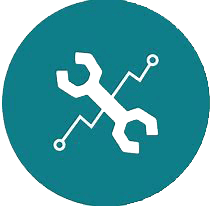Europe Atomic Clock Market

Europe Atomic Clock Market, By Type (Rubidium Atomic Clock, Cesium Atomic Clock, Hydrogen Maser Atomic Clock); By Application (Aerospace & Defense, Telecommunications, Scientific Research); By End User (Government Agencies, Commercial Enterprises, Research Institutions), Trend Analysis, Competitive Landscape & Forecast, 2019–2031
- Published Date: June 2025
- Report ID: BWC25310
- Available Format: PDF
- Page: 279
Report Overview
An increasing demand for precision timing, advancements in quantum technology, aerospace investments, telecommunications expansion, satellite navigation reliance, and scientific research applications are expected to boost the growth of Europe Atomic Clock Market during the forecast period between 2025 and 2031.Europe Atomic Clock Market – Industry Trends & Forecast Report, 2031
Europe Atomic Clock Market size was estimated at USD 129.13 million in 2024. During the forecast period between 2025 and 2031, Europe Atomic Clock Market size is projected to grow at a CAGR of 7.25%, reaching a value of USD 210.77 million by 2031. Europe Atomic Clock Market is driven by the rising demand for precision timing in telecommunications, aerospace, and defense applications. Advancements in quantum technology and optical lattice clocks are enhancing accuracy and reliability. The expansion of satellite navigation systems and the adoption of atomic clocks in 5G networks are fueling growth. Additionally, government investments in scientific research and space exploration are boosting market demand. Miniaturization and integration of AI-driven atomic timekeeping solutions are further accelerating adoption across various industries.
Atomic Clock – Overview
An atomic clock is a highly precise timekeeping device that measures time based on the vibrations of atoms, typically cesium or rubidium. These clocks are far more accurate than conventional timepieces, with deviations of only billionths of a second per day. Atomic clocks play a crucial role in GPS systems, telecommunications, scientific research, and aerospace applications. Their stability and precision make them essential for synchronizing global networks, navigation systems, and space missions, ensuring reliable timekeeping across various industries.
Europe Atomic Clock Market
Growth Drivers
Increasing Demand for Precise Timekeeping
Europe Atomic Clock Market is witnessing a growing demand for ultra-precise timekeeping in telecommunications and navigation systems. Atomic clocks ensure high synchronization accuracy for 5G networks, satellite communications, and GPS applications. Advancements in quantum technology and optical lattice clocks are enhancing precision, reducing signal delays, and improving data transmission reliability. Governments and private enterprises are investing in next-generation atomic timekeeping solutions to support aerospace, defense, and scientific research, further driving market expansion.
Challenges
High Cost of Atomic Clock Development and Maintenance
Europe Atomic Clock Market faces significant financial barriers, due to the high costs associated with research, development, and maintenance. Advanced atomic clock technologies require substantial investments in precision engineering, quantum mechanics, and specialized materials. Additionally, ongoing calibration and operational expenses add to the financial burden. Limited funding and high entry costs hinder widespread adoption, particularly among smaller enterprises. Despite growing demand, cost constraints remain a major challenge for market expansion.
Impact of Escalating Geopolitical Tensions on Europe Atomic Clock Market
Escalating geopolitical tensions are disrupting supply chains, affecting the availability of critical components for atomic clock manufacturing. Trade restrictions and economic sanctions are limiting cross-border collaborations, slowing technological advancements. Additionally, heightened security concerns are driving increased defense investments, boosting demand for high-precision atomic clocks in military applications. However, market uncertainty and fluctuating economic conditions are challenging long-term growth, as companies navigate shifting regulatory landscapes and geopolitical instability.
Europe Atomic Clock Market
Segmental Coverage
Europe Atomic Clock Market – By Type
Based on type, Europe Atomic Clock Market is divided into Rubidium Atomic Clock, Cesium Atomic Clock, and Hydrogen Maser Atomic Clock segments. The Cesium Atomic Clock segment holds the largest share of Europe Atomic Clock Market by type, driven by its high precision and stability in timekeeping applications. Cesium atomic clocks are widely used in telecommunications, satellite navigation, and aerospace due to their superior accuracy. Governments and research institutions are investing in next-generation cesium-based atomic clocks to enhance synchronization in 5G networks, defense systems, and scientific research. The growing demand for ultra-precise timekeeping solutions continues to strengthen this segment.
Europe Atomic Clock Market – By Application
On the basis of application, Europe Atomic Clock Market is divided into Aerospace & Defense, Telecommunications, and Scientific Research segments. The Aerospace & Defense segment holds the largest share in Europe Atomic Clock Market, driven by its critical role in satellite navigation, military communications, and precision-guided weaponry. Atomic clocks ensure high-accuracy synchronization for defense operations and space missions, making them indispensable for national security and aerospace advancements. Governments and defense agencies are investing in next-generation atomic clock technologies to enhance timing precision, secure communications, and strategic defense capabilities, further strengthening this segment
Europe Atomic Clock Market – By End User
Europe Atomic Clock Market by end user is divided into Government Agencies, Commercial Enterprises, and Research Institutions segments. The Government Agencies segment holds the largest share in Europe Atomic Clock Market, driven by high investments in defense, aerospace, and satellite navigation systems. Governments rely on atomic clocks for secure military communications, precision-guided weaponry, and GPS synchronization. Additionally, national space programs and scientific research initiatives further boost demand. The adoption of next-generation atomic timekeeping technologies ensures accurate timing for critical infrastructure, reinforcing the dominance of this segment.
Competitive Landscape
Major companies operating in Europe Atomic Clock Market include Microchip Technology Inc., Orolia (Safran), Oscilloquartz (ADVA Optical Networking), Leonardo S.p.A., Siemens AG, FEI-Zyfer Inc., AccuBeat Ltd, SpectraTime (Orolia Group), VREMYA-CH JSC, IQD Frequency Products Ltd, and Stanford Research Systems. To further enhance their market share, these companies employ various strategies, including mergers and acquisitions, partnerships, joint ventures, license agreements, and new product launches.
Scope of the Report
|
Attributes |
Details |
|
Years Considered |
Historical Data – 2019–2031 |
|
Base Year – 2024 |
|
|
Estimated Year – 2025 |
|
|
Forecast Period – 2025–2031 |
|
|
Facts Covered |
Revenue in USD Million |
|
Market Coverage |
Europe |
|
Product/ Service Segmentation |
Type, Application, End User |
|
Key Players |
Microchip Technology Inc., Orolia (Safran), Oscilloquartz (ADVA Optical Networking), Leonardo S.p.A., Siemens AG, FEI-Zyfer Inc., AccuBeat Ltd, SpectraTime (Orolia Group), VREMYA-CH JSC, IQD Frequency Products Ltd, Stanford Research Systems |
By Type
-
Rubidium Atomic Clock
-
Cesium Atomic Clock
-
Hydrogen Maser Atomic Clock
By Application
-
Aerospace & Defense
-
Telecommunications
-
Scientific Research
By End User
-
Government Agencies
-
Commercial Enterprises
-
Research Institutions
- Research Framework
- Research Objective
- Product Overview
- Market Segmentations
- Executive Summary
- Europe Atomic Clock Market Insights
- Industry Value Chain Analysis
- DROC Analysis
- Growth Drivers
- Increasing demand for precise timekeeping in telecommunications and navigation
- Advancements in quantum and optical lattice clock technologies
- Rising investments in aerospace and defense applications
- Restraints
- High cost of atomic clock development and maintenance
- Complexity in integration with existing infrastructure
- Limited availability of skilled professionals for atomic clock technology
- Opportunities
- Expansion of atomic clock applications in 5G and satellite communication
- Growing adoption in scientific research and space exploration
- Challenges
- Regulatory and standardization hurdles in atomic clock deployment
- Supply chain disruptions affecting component availability
- Growth Drivers
- Technological Advancements/Recent Developments
- Regulatory Framework
- Porter’s Five Forces Analysis
- Bargaining Power of Suppliers
- Bargaining Power of Buyers
- Threat of New Entrants
- Threat of Substitutes
- Intensity of Rivalry
- Europe Atomic Clock Market Strategies
- Europe Atomic Clock Market: Pricing Analysis
- Europe Atomic Clock Market Overview
- Market Size & Forecast, 2019–2031
- By Value (USD Million)
- Market Share & Forecast
- By Type
- Rubidium Atomic Clock
- Cesium Atomic Clock
- Hydrogen Maser Atomic Clock
- By Application
- Aerospace & Defense
- Telecommunications
- Scientific Research
- By End User
- Government Agencies
- Commercial Enterprises
- Research Institutions
- By Type
- Market Size & Forecast, 2019–2031
- Competitive Landscape
- List of Key Players and Their Offerings
- Europe Atomic Clock Market Share Analysis, 2024
- Competitive Benchmarking, By Operating Parameters
- Key Strategic Developments (Mergers, Acquisitions, Partnerships)
- Impact of Escalating Geopolitical Tensions on Europe Atomic Clock Market
- Company Profiles (Company Overview, Financial Matrix, Competitive Landscape, Key Personnel, Key Competitors, Contact Address, Strategic Outlook, SWOT Analysis)
- Microchip Technology Inc.
- Orolia (Safran)
- Oscilloquartz (ADVA Optical Networking)
- Leonardo S.p.A.
- Siemens AG
- FEI-Zyfer Inc.
- AccuBeat Ltd
- SpectraTime (Orolia Group)
- VREMYA-CH JSC
- IQD Frequency Products Ltd
- Stanford Research Systems
- Key Strategic Recommendations
- Research Methodology
- Qualitative Research
- Primary & Secondary Research
- Quantitative Research
- Market Breakdown & Data Triangulation
- Secondary Research
- Primary Research
- Breakdown of Primary Research Respondents, By Region
- Assumptions & Limitations
- Qualitative Research
*Financial information of non-listed companies can be provided as per availability.
The segmentation and the companies are subject to modifications based on in-depth secondary research for the final deliverable.
List of Figures
Figure 1 Europe Atomic Clock Market Segmentation
Figure 2 Europe Atomic Clock Market Value Chain Analysis
Figure 3 Company Market Share Analysis, 2024
Figure 4 Europe Atomic Clock Market Size, By Value (USD Million), 2019–2031
Figure 5 Europe Atomic Clock Market Share, By Type, By Value, 2019–2031
Figure 6 Europe Atomic Clock Market Share, By Application, By Value, 2019–2031
Figure 7 Europe Atomic Clock Market Share, By End User, By Value, 2019–2031
List of Tables
Table 1 Europe Atomic Clock Market Size, By Value (USD Million), 2019–2031
Table 2 Europe Atomic Clock Market Size, By Type, By Value, 2019–2031
Table 3 Europe Atomic Clock Market Size, By Application, By Value, 2019–2031
Table 4 Europe Atomic Clock Market Size, By End User, By Value, 2019–2031
Table 5 Microchip Technology Inc. Company Overview
Table 6 Microchip Technology Inc. Financial Overview
Table 7 Orolia (Safran) Company Overview
Table 8 Orolia (Safran) Financial Overview
Table 9 Oscilloquartz (ADVA Optical Networking) Company Overview
Table 10 Oscilloquartz (ADVA Optical Networking) Financial Overview
Table 11 Leonardo S.p.A. Company Overview
Table 12 Leonardo S.p.A. Financial Overview
Table 13 Siemens AG Company Overview
Table 14 Siemens AG Financial Overview
Table 15 FEI-Zyfer Inc. Company Overview
Table 16 FEI-Zyfer Inc. Financial Overview
Table 17 AccuBeat Ltd Company Overview
Table 18 AccuBeat Ltd Financial Overview
Table 19 SpectraTime (Orolia Group) Company Overview
Table 20 SpectraTime (Orolia Group) Financial Overview
Table 21 VREMYA-CH JSC Company Overview
Table 22 VREMYA-CH JSC Financial Overview
Table 23 IQD Frequency Products Ltd Company Overview
Table 24 IQD Frequency Products Ltd Financial Overview
Table 25 Stanford Research Systems Company Overview
Table 26 Stanford Research Systems Financial Overview
Market Segmentation
To request a free sample copy of this report, please complete the form below.
We value your investment and offer free customization with every report to fulfil your exact research needs.
Frequently Asked Questions (FAQs):
RELATED REPORTS
WHY CHOOSE US
-

24/7 Research Support
Get your queries resolved from an industry expert. Request for a free product review before report purchase.
-

Custom Research Service
Ask the Analyst to customize an exclusive study to serve your research needs
-

Quality & Accuracy
Ask the Analyst to customize an exclusive study to serve your research needs
-

Data Visualization
As the business world is changing dynamically every day. We need to stay pin point in relation to data management and optimum data utilization
-

Information security
We never share your personal and confidential information. Your personal information is safe and secure with us.


